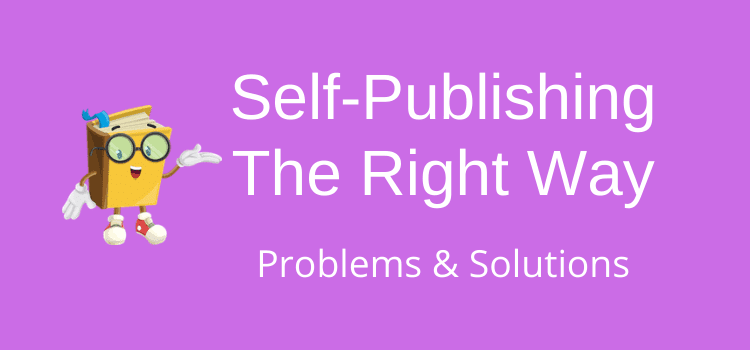
Self-publishing a book is easy for new authors now, but this simplicity can lead to problems.
Services such as Kindle Direct Publishing (KDP), Smashwords, or Draft2Digital offer all you need to publish an ebook or paperback.
It is true that uploading and publishing a Microsoft Word file and a quick homemade book cover is remarkably fast and straightforward.
You can do it in under five minutes and have your book published and on sale in less than twenty-four hours. On top of that, you can do it all for free.
Will your book sell?
Simplicity might be a great thing, but how many books and ebooks do new self-publishing authors sell? Perhaps a few to friends and family, and then what?
How can you avoid mistakes that will reduce your selling potential? Take a look at the following questions before you publish your book.
If you can tick all the boxes, you stand a much better chance of success.
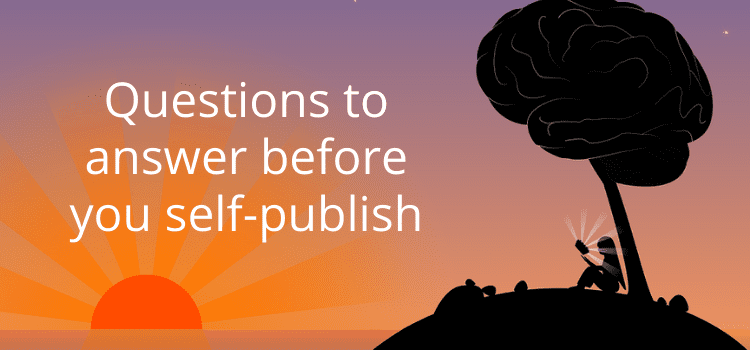
You only get one chance to self-publish your book
New self-published authors rarely succeed in selling books. The publishing industry, and book marketing, in particular, is a tough business.
A new indie author has to think like a traditional publisher to stand any chance of publishing a successful story, self-help book, or nonfiction title.
Publishing companies go through a long process to prepare a book for release. The process and methods are the same for an Indie author, except that you have to do everything yourself.
If you write and then publish too soon, you can miss so many steps in the production process.
It is where problems and mistakes can occur. The result is almost always a sub-standard book that no one wants to buy.
15 Ways to avoid self-publishing problems
Are you open to taking some self-publishing advice? Here are fifteen of the most common issues for new self-publishing authors.
It is a list of mistakes, errors, and omissions in the process that you need to avoid making before you publish your book or ebook.
If you are not having the success you would like, you can always try to fix them and hopefully do better.
1. Did you do any market research and analysis?
Who will buy your book? Do you have any idea?
The idea that my book is for everyone is a common misconception. Book buyers are incredibly fussy and are only attracted to books in their preferred genres.
You stand no chance of selling a story about World War II or a Sci-fi Space Opera to an avid reader of Regency romance. Taking the time to think about the demographics of potential readers for your book has enormous advantages.
Firstly, you can check competitive titles in your genre and find out what readers like the best. Look at the book reviews to find out how readers think, particularly what they like and don’t like.
You can then perhaps adapt your manuscript a little to their taste. Secondly, you can focus your book marketing much better.
Ask yourself these questions.
What age group are my potential readers?
Is my genre somewhat gender specific?
What social media network would these readers likely use? Instagram for the young or Facebook for mature readers?
Does my story have a political angle? Maybe Twitter would be a possible way to find readers.
Understanding who will consider buying your book and why they might do so can make a massive difference to your chances of success.
2. Is your book cover design poor?
Nothing reduces a book’s selling potential faster than an awful cover.
Cheap always looks cheap, especially when a cover is reduced to small sizes on book retailer sites.
The quality, design, clarity, sharpness, color, font choices, and overall appeal of a book cover all have a direct effect on book sales.
You might think making your homemade book cover will save you a few dollars.
But it will never help you make money. So, it is a waste of energy and very poor business logic.
If you spend money on nothing else, always find a professional for the job and hire a book cover designer for your ebook and print-on-demand (POD) book covers.
3. Did you get adequate editing help?
It is not easy for a new author to afford a developmental editor.
However, having access to someone who can point out weaknesses in your story is a vital part of refining a manuscript.
Yes, if you can find good beta readers, it can help.
You need someone you can trust who can tell you when something doesn’t make sense or is missing essential information.
Someone who can tell you that chapter one has to go because it is only scene-setting, and you need to get into the story immediately.
If you don’t have access to this kind of assistance, you might want to consider the services of a freelance editor.
4. Did you use beta readers?
Never publish a book that no one other than you, the author, has read.
Without honest feedback, there is no way you can improve your manuscript. It is hard to find beta readers, but it is a necessity.
Another reason that beta readers are critical is that they will be the ones to write your first book reviews.
Publishing a new book with no reviews and hoping they will come along in time is a wish, not a plan.
Plans often work but wishes never do.
5. Did you complete meticulous checking and proofreading?
It takes a long time to produce a perfect manuscript.
Copy editors are very expensive, so most authors opt to do much of the work themselves.
You should think about using an excellent writing correction and assessment tool.
A lot of writers use Grammarly, which is a fantastic tool for online writing.
However, ProWritingAid is a much better choice for authors because it provides a more in-depth analysis of their writing.
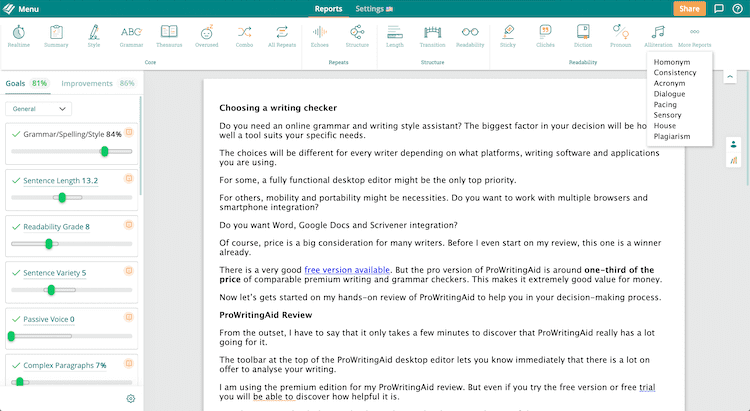
There are more detailed reports that cover over twenty aspects of your writing. It shows you where you are doing well and where you can improve.
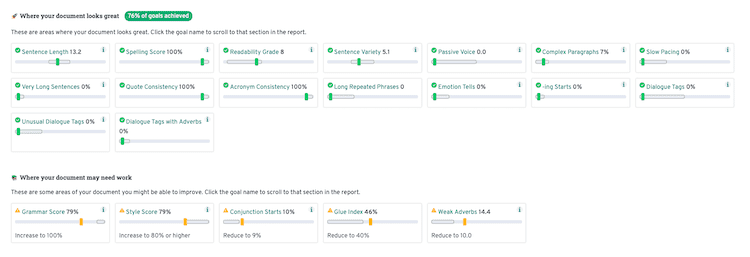
It is a very affordable tool and can help you find so many ways to improve your text.
Prowritingaid will locate grammatical and spelling errors, repetitions, and typos. It can also check sentence length, overused words, and readability.
It will save you a lot of time and make the final stage of human proofreading easier and faster.
But don’t skip the last and most crucial stage.
No matter what tools you use, you have to perform thorough human proofreading before publishing, preferably by at least two people.
6. Did you spend enough time on book formatting?
Nothing is more annoying for a reader than poor text formatting in an ebook or book.
Take the time to make sure you format your text perfectly for ebook publication and, again, for POD books.
You need to take extra care with ebooks, including images, and especially for poetry ebooks.
7. Did you write a quick book description?
It is easy to see when a book description is an afterthought and only written at the time of publishing.
Always write your book description with a lot of thought.
Remember, it is second only to your book cover to get a book buyer to consider your book.
Your description must tell the reader why they will love it and buy it. It is your sales pitch, so pitch as well as you can.
You usually have up to 4,000 characters available, so use it. It is not easy to write a great book description, so it needs work.
Quickly tapping out one or two sentences is not a book description.
8. Did you research your category and keyword selection?
Most book purchases are made by readers searching Amazon or other book retailers.
Search is the most powerful way to sell books, but many new authors fail to seriously consider it.
When you publish, you are asked to select three genre categories and seven search keywords.
If you make your selection on the spur of the moment when you publish, you will achieve nothing from them.
You can only leverage sales by doing detailed research for the best and least competitive categories and keywords for your book.
You can do your keyword research using Amazon or Google. But the best way is to have access to real-time Amazon buyer data.
The tool used by many authors is Publisher Rocket.
It gives you access to the data you need to decide which categories and keywords will help your book sales.
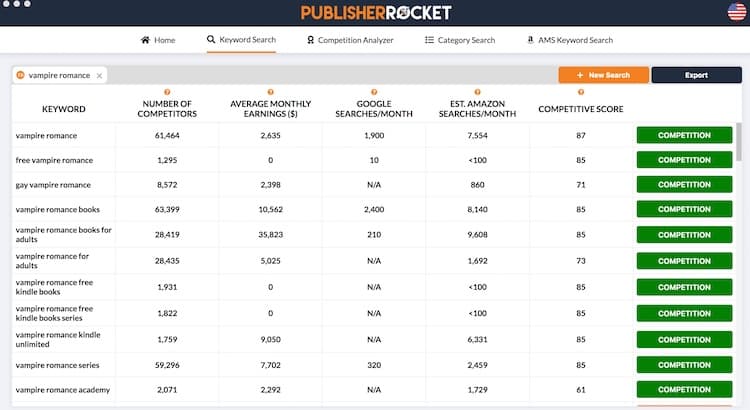
Another aspect to consider is book titles. Is your title keyword-rich and useful for retail and online user searches?
Take your time before deciding on your book title, and do your research.
9. Did you have a book marketing plan?
Thinking about marketing and promoting your book after you publish is putting the cart before the horse.
You need to identify your potential readers. Then, make a plan to get your book in front of their eyes.
Book marketing has many aspects.
There is content marketing via blogging, social media campaigns, paid and free advertising, as well as online book promotion, to name a few.
Have you started to build an email address mailing list?
Publishing a book without any thought of marketing or promotion is one of the biggest self-publishing mistakes.
No marketing means no sales.
10. Did you set up your Amazon Author Page?
If you haven’t set up your Amazon Author Page on Author Central, you miss many book and author promotion opportunities.
You can extend your book description, add editorial reviews, and set a follow button for Amazon buyers.
Take the time to set up your page correctly and fully.
You can also add an author page on international Amazon stores in the UK, Germany, France, and Japan.
11. Did you only publish one version of your book?
Self-publishing an ebook is fast.
However, publishing a print-on-demand book opens up your sales chances because not all readers love ebooks.
Another benefit is that publishing a print or audiobook version extends your potential discovery through user search.
Remember the importance of your categories and keywords?
Well, you can use more because each version can have different categories and keywords.
You can self-publish in paperback using Amazon KDP.
12. Are you only using one book retailer?
It is a decision every new author has to make.
Do you wish to sell your book exclusively with Amazon KDP Select or open-publish and make your ebooks available on Apple, B&N, and Kobo?
It is not an easy decision to make.
The best advice is to consider which option will work best for you.
It can often depend on the type of book you are publishing and your potential book buyers.
13. Is your book price realistic?
It would be great if readers would willingly pay $50.00 for an ebook, wouldn’t it?
Well, in the real world, it will never happen.
Books are price-sensitive. So, your book pricing needs to be realistic and within market expectations.
The best price points for a digital book are between $0.99 and $3.99, and for paperback print books, between $8.00 and $14.00.
Trying to sell your book at a price above the market will not help you sell books or make money.
Yes, it was hard work writing a book, and your time should be worth more.
But the reality of the book-buying market today for author earnings dictates what price and return you can get.
14. Did you have bad timing?
Are you running a bit late on getting your book out?
Well, if it was a children’s Christmas story, and it’s now early February, you missed the bus. Wait until October before you publish.
Have you written a book about a current political event, politician, or celebrity?
But you now find out that they have become yesterday’s news.
Writing about current trending topics is always prone to becoming outdated quickly. Your book will almost always date very fast.
If you don’t get a huge rush of sales in the first couple of months, you will have missed your time.
You can only expect sales to fall away very quickly after that.
15. Did you give up? It is always the best way to fail.
It is a long process to write and publish a book.
There will be times when you are tired, lazy, or fed up. It’s a tough job being an independent author.
But writers and authors like you can and do succeed, so don’t give up on your project too soon.
Take a break from it and come back to it refreshed and ready to go again.
Summary
Self-publishing is not a two-step process of writing and then immediately publishing.
There are many more steps involved in bringing your book to market and having a chance of success.
If you can complete all the necessary steps before you publish, you will at least know that book buyers will get value for their money when they buy and read your book.
Avoiding the most common self-publishing problems can only help give your new book its best chance to succeed.
Related Reading: Amazon Self-Publishing Problems And Solutions For Authors


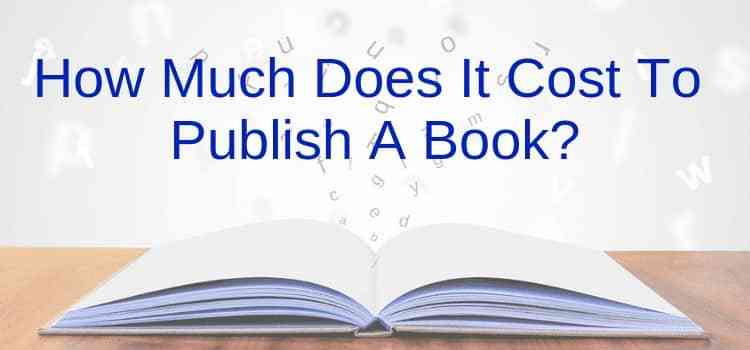
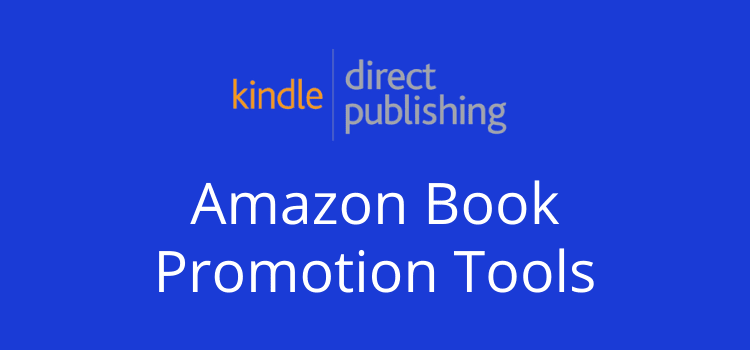
I wrote a book and need help with my book. I wrote my book with my hands.It’s not typed.
Sherry Taylor
“Someone who can tell you that chapter one has to go because it is only scene-setting waffle and you need to get into the story immediately.”
Yep. I have decided that for me, editing includes chopping chapter 1, and possibly chapter 2, every time I get around to the late versions of each draft!
But at least I know that now.
Great blog! Thanks for sharing. I have always thought I would go the traditional route, but I have been considering ebooks over the last 6 months.
Yup, that’s the way it is. Not new but well put together for all the newbies and wannabes. LOL.